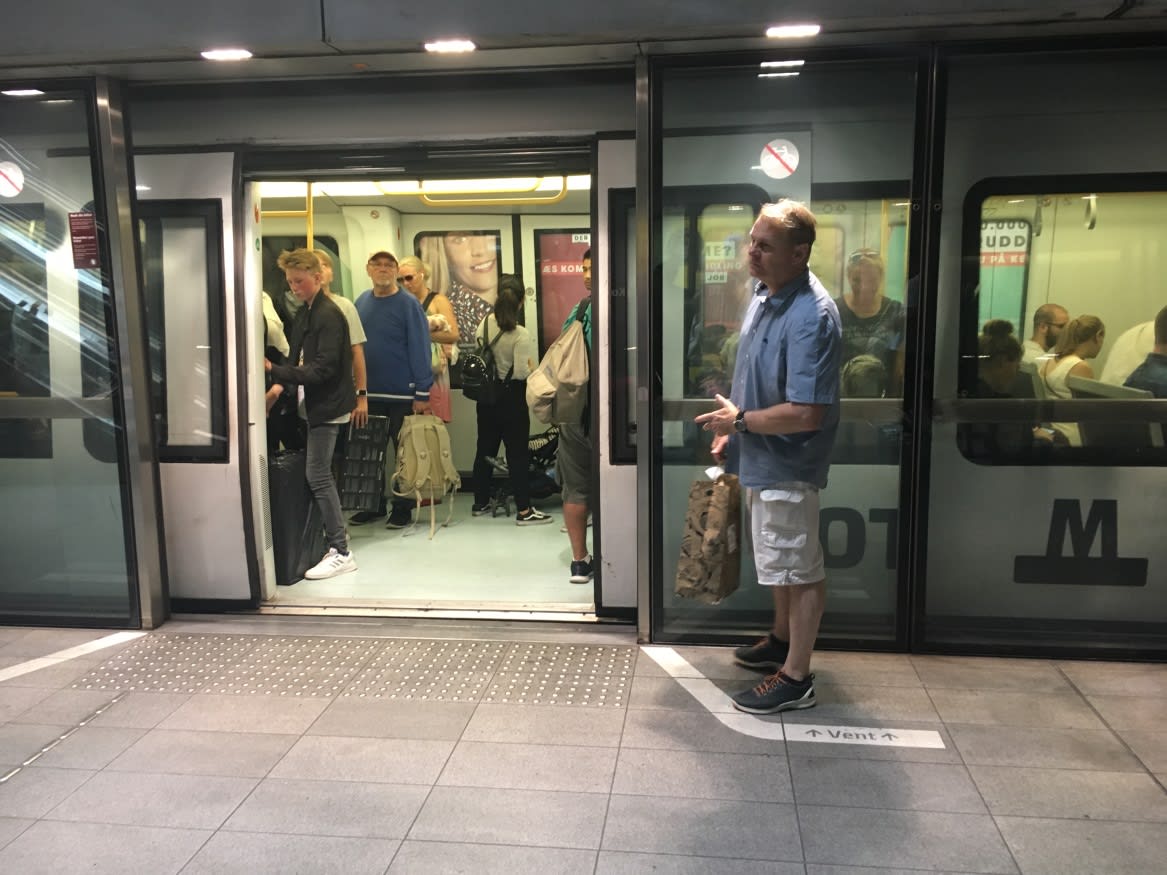Connections to the Ontario Line are easier thanks to this design
This project will provide efficient transit through downtown and bring the subway to new places.
Oct 23, 2019
They say that life is easier the more connections you make.
The same is true for the transit that moves you through life.
Making easier connections will be one of the important principles behind the design of Toronto’s new Ontario Line subway, which will connect with GO Trains and TTC routes.
With an above ground station at East Harbour – near Lake Shore Boulevard East and the Don Valley Parkway – Ontario Line will be part of a new transit hub in a part of the city that is poised for spectacular growth.
“At East Harbour, we are building the Union Station of the east, so we will need strong connections between the subway and GO,” says Mathieu Goetzke, Chief Planning Officer for Metrolinx. “With the GO line elevated above ground level there, the challenge is to get Ontario Line and the GO line working together providing as seamless as possible transfers.”
The natural solution is to put Ontario Line at the same level as the existing GO tracks so passengers can step off one train and only have to walk a few steps – straight across – to board their next connection.
Naturally, this is only possible for transfers going in one direction – those making the other connection a customer will have to go down one flight of stairs, under the tracks, before going back up to the make their connection.
Riders will have a much faster connection above ground than was envisioned under an earlier plan that would have seen the Downtown Relief Line built 38 metres below ground at East Harbour.
“Getting out through a cascade of escalators from 38 metres to the top would be a slow experience for customers,” Goetzke explains.
An above ground station at East Harbour also means Ontario Line can cross the Don River by bridge, eliminating the need for a costly tunnel, saving tax dollars.
“When you are digging deep, every cubic metre that you dig is expensive,” Goetzke says.
Of course, the added convenience for riders is even more valuable than the cost savings.
Cutting out multiple escalator rides will save four-and-a-half minutes on each transfer, compared to staying on one level and walking across the platform, says Becca Nagorsky, director of project planning. This is also important for people connecting to TTC surface routes.
Nagorsky says research shows that kind of delay would discourage 15 per cent of ridership from using this transfer.
“For someone who is on a streetcar and asking, ‘Should I transfer to Ontario Line?’ the time saving has to be worth it,” she notes.
Trains with level-boarding and platform doors for safety, and automated technology, will also make for more efficient transfers. Automated trains stop at the same place each time, which means passengers can wait for the trains in marked areas, making for a better flow in the station. This system is commonly used in Europe.
“People don’t block doors the way they might on a regular subway,” Goetzke says. “They stand on the side, the flow goes out, the flow goes in, boom.”
Moving west from East Harbour Station the Ontario Line will go back underground as it moves under the downtown core to connect with the existing Line 1 Queen and Osgoode TTC subway stations.
“We will have some deep stations downtown because there is a lot under the ground, like building foundations and utilities,” Nagorsky says.
Goetzke adds that planners are looking at how to use retail space and other services to make the experience of moving up and down more enjoyable for the customer.
“In Paris, you feel like it’s part of your journey to buy a bottle of wine on the way to dinner while making a transfer,” he points out.
Moving west of the downtown core, Ontario Line will bring the subway system to Liberty Village. With a stop above ground, at the Exhibition GO Station, the new line will take advantage of existing GO corridor.
In addition to serving the area’s growing population, this is good news for anyone that travels to the Exhibition grounds and Ontario Place for sports, concerts, conferences and trade shows, the CNE and other attractions.
Whether above or below ground, all Ontario Line stations will be designed with the riders’ interest in mind.
It’s all about powerful and quick connections.
